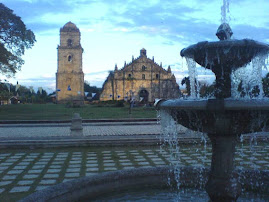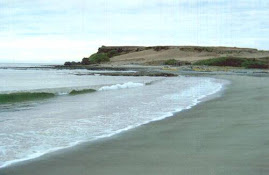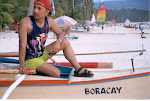A Brief History of Paoay
Paoay’s former name was Bombay. Its site was originally located in the village of Callaguip - along the coastal shores of the South China Sea - now a barrio of Paoay, which is about two kilometers west of the present town proper.
 Historians say: “From the date of early settlement to 1701, little could be said about the activities of the early settlers of Paoay except that much had been done in the clearing of the forests nearby. They converted the forests into rice and sugar lands through the slash-and-burn method called ‘kaingin.’ The early settlers were of a peace-loving tribe, but their major problem was the frequent furious incursions of Sea Rovers and Moro pirates called Tirong who looted indiscriminately their agricultural produce and other valuables. To protect themselves from further incursions, the folks moved towards the nearby inland where the present town proper is now located. In the farther western inland, there were also settlers who formed the neighboring town of Batac. Sensing that the Bombay people had suffered too much from the Moro raids, the people of Batac offered the people of Bombay to live with them. But the brave and maverick folks rejected the offer and instead they uttered "Maka-paoay kami" – an Ilocano dialect jargon meaning they could live independently. The settlers from Batac were offended and it was from this incident that the name of the town came to arrive as PAOAY.”
Historians say: “From the date of early settlement to 1701, little could be said about the activities of the early settlers of Paoay except that much had been done in the clearing of the forests nearby. They converted the forests into rice and sugar lands through the slash-and-burn method called ‘kaingin.’ The early settlers were of a peace-loving tribe, but their major problem was the frequent furious incursions of Sea Rovers and Moro pirates called Tirong who looted indiscriminately their agricultural produce and other valuables. To protect themselves from further incursions, the folks moved towards the nearby inland where the present town proper is now located. In the farther western inland, there were also settlers who formed the neighboring town of Batac. Sensing that the Bombay people had suffered too much from the Moro raids, the people of Batac offered the people of Bombay to live with them. But the brave and maverick folks rejected the offer and instead they uttered "Maka-paoay kami" – an Ilocano dialect jargon meaning they could live independently. The settlers from Batac were offended and it was from this incident that the name of the town came to arrive as PAOAY.”“The first inhabitants might have come from Bombay, India because the early name of the town was Bombay and settlers in the early days usually named the land settlement they found after the name of their country and place of origin. When the settlers from Bombay arrived, they found the Indonesians already making headways in clearing the forests. Later, the more civilized Malays came and they drove the Indonesians away. Some were captured and held slaves to help improve the land settlement. Those who opted to live with the Malays stayed. The two races turned blended that it is now hard to trace the single origin of the early settlers.”
“The last two settlers established their permanent homes at the present site of the town proper because the location was best suited for their personal convenience and protection from the marauders. Hence, the site was accessible to the barrios where they cleared for farming, namely: Burit, Monte, Paratong, Tamurong, Tigui, Madamcao, Baramban, Lang -Ayan, Lioes, Tarangutong, Lubbot, Currimao, Gaang, Pias, Maglaoi, Anggapang, Comcomloong, Dalayab, Puritac, Cubol, Burayoc, Nagtriguan, Ullaleng, Buangga, Cabaruan, Tugay, Maburiac, Liliputen, and Sacritan. Most of these barrios are now adjudicated to the towns of Pinili, Currimao, and Batac which became municipalities in 1920 and 1921, respectively.”
To cite the characteristics and traits of its people, Paoayenos (called the people of Paoay) are by nature industrious, thrifty, intrepid, daring, individualistic, peace-loving, adventurous, hospitable, and religious people.”





No comments:
Post a Comment